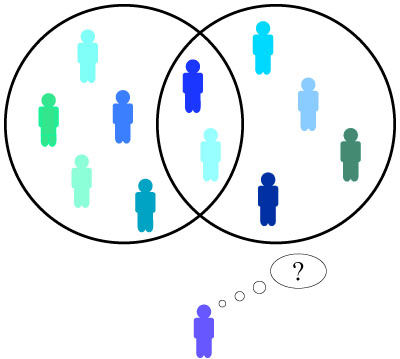Adding new categories to UC application allow for more accurate racial representations

By Rohan Viswanathan
April 26, 2012 11:25 p.m.
The University of California system has always prided itself in the diversity found throughout its campuses. Yet beneath this desire for diversity lies a misrepresentation of many ethnic groups because of broad racial and ethnic categorization found on the UC undergraduate application.
The UC system has begun to take steps in order to right this misdeed.
Thanks to an initiative led by Nairi Shirinian, senator of the UC Academic Senate of the University of California, and various Middle Eastern student groups at UC Berkeley, Middle Eastern students may finally have an opportunity to be adequately represented on the UC admittance application.
Currently, Middle Eastern students are listed as white, but the future goal is to ultimately have Middle Eastern be designated as its own independent ethnicity. Shirinian’s bill asking for support from the UC system to aid in creating the “Southwest Asia and North Africa” designation or “SWANA,” unanimously passed earlier this month. Now all that is left is for the proposal to be implemented.
Although today’s Middle Eastern students may soon be able to check off a designation that rightfully applies to them, many before them lost out on privileges, including scholarships and culturally directed academic programs, because of this misinformed broad categorization.
Middle Easterners do not identify themselves as white, Shirinian said. Yet the UC system believed it right to designate them as so.
The UC has been following a model established by the federal government, which lists Middle Easterners as a subset of white on major government forms including the census. Yet in order to fully encompass the diversity the UC system promises, it must immediately divert from this federal model.
Neglecting certain diversities has been deeply rooted in American history since the 19th century with the prominence of the “three race theory,” Shirinian said. Following this theory, the federal government espoused the belief that white, Asian and black were the only three major races; all others were relegated to second tier ethnicities.
As the federal government and, in this case, the UC system, began following this model, numerous inconsistencies became prevalent. Problems such as under-counting and misrepresentation of minorities have become a major issue because of such broad racial categorization.
The UC application utilizes statistics referring to ethnicity in order to create academic programs that pertain to minority groups. However, with Middle Easterners classified as white, programs such as Arabic, Armenian, Syrian, etc. studies are inevitably compromised.
Not only so, but because Middle Eastern students are forced to report themselves as white, the percentages of white students are severely skewed. This in turn hinders academic programs geared toward Middle Eastern students. While other minorities may be eligible for scholarships on account of their ethnicity, through the UC application, the white label has made it nearly impossible for Middle Eastern students to receive any type of ethnic-oriented scholarship or financial aid from the UC system.
The failure of the current structure is demonstrated by confusion from some students that has arisen between identification as North African American and African American.
Shirinian said North African students have begun checking off the African-American option and receiving scholarships designated for black students. Without this new “Southwest Asia and North Africa” option, students are unable to properly classify themselves and end up selecting other ethnicities, thus skewing the entire data set.
But limited racial options on the UC application impacts far more than just scholarships and under-representation ““ it speaks to the makeup of society.
Razmig Sarkissian, President of the UCLA Armenian Student Association, believes the most pressing issue in this entire movement is the psychological one.
It ruins the psyche of many Middle Eastern communities who are forced to choose an ethnicity they do not identify with, he said.
This brings up a very serious issue: Forced integration into the white category.
However, the fight for a new Middle Eastern designation does have precedent on its side. A 2007 “Count Me In” campaign aided in creating 23 new Asian American and Pacific Islander designations on the UC application.
If we follow this trend, however, will every minority group, regardless of size be allowed to have their own designation on an application? But even if it does come to that, why should that be a cause for concern?
The change is long overdue, and the UC should go even further and add every ethnicity on the list in order to allow students to enter in the ethnicity they identify with, instead of limiting them with predetermined options.
For the University of California system, which relishes in its hype of diversity, it would be the ultimate form of hypocrisy to force ethnic groups to assimilate to large race denominations rather than to rightfully allow them to be properly represented throughout all UC campuses.
Email Viswanathan at [email protected]. Send general comments to [email protected] or tweet us @DBOpinion.


